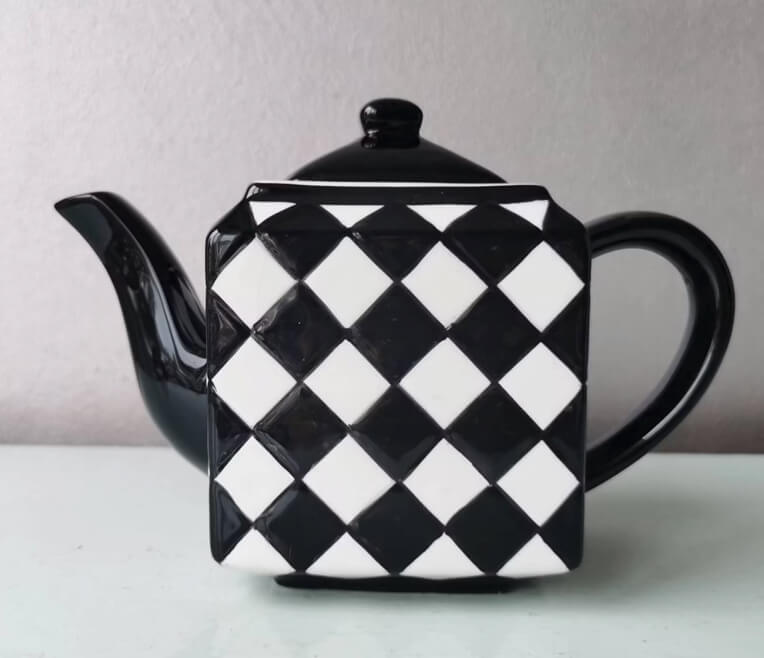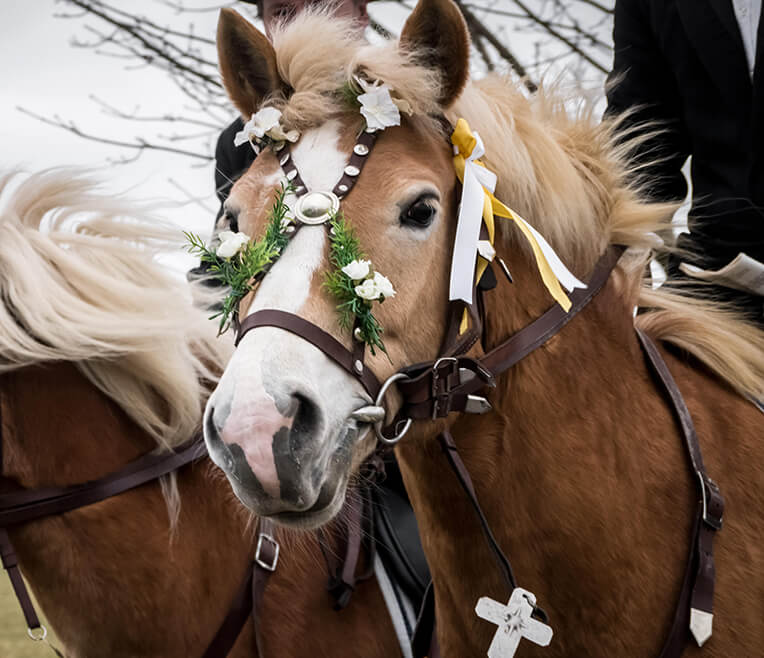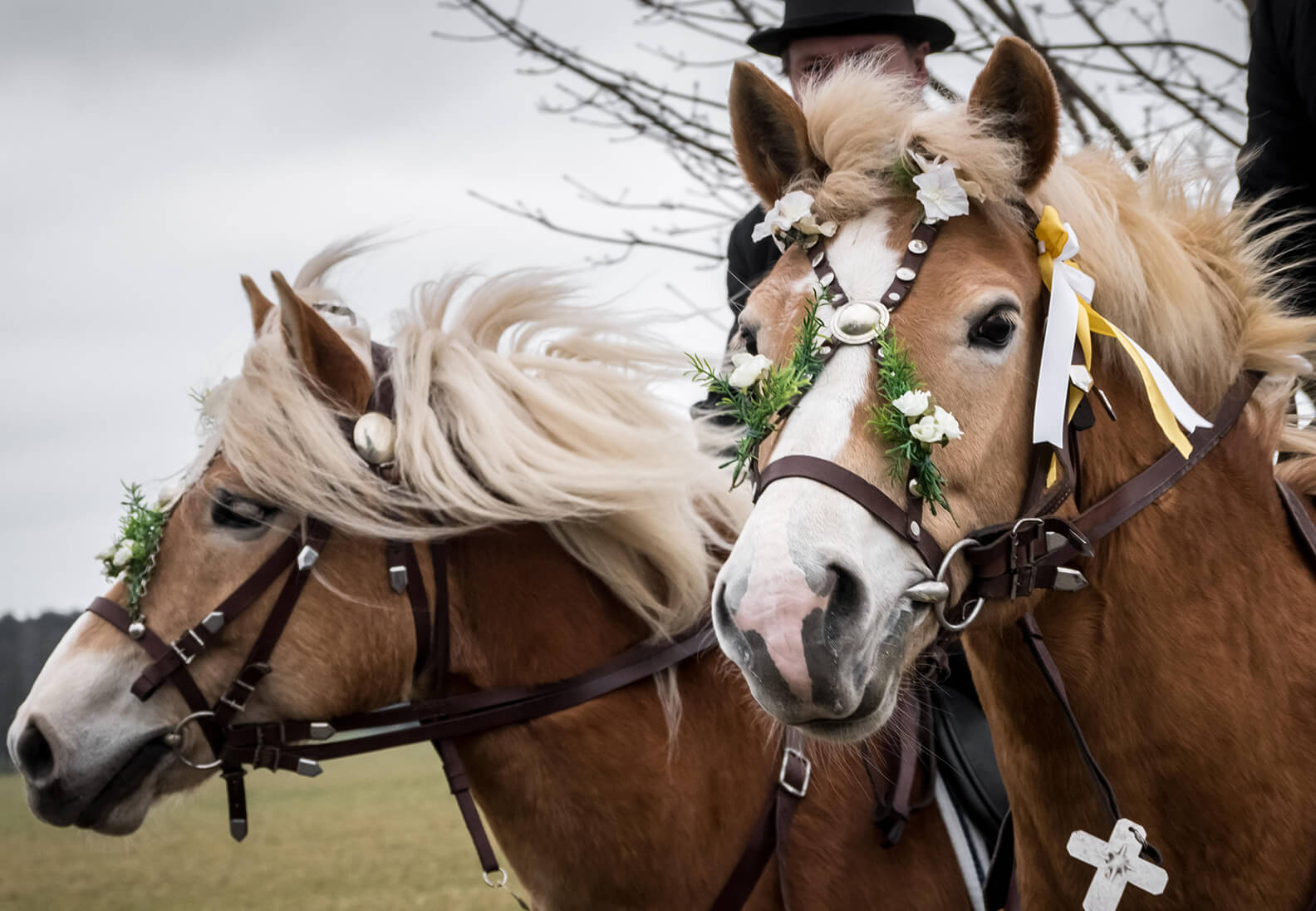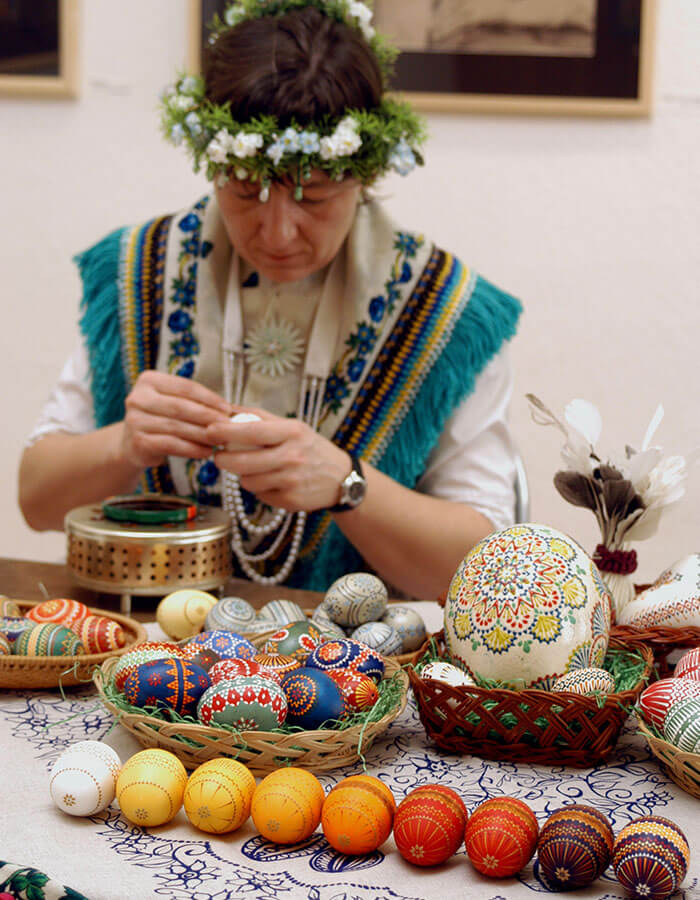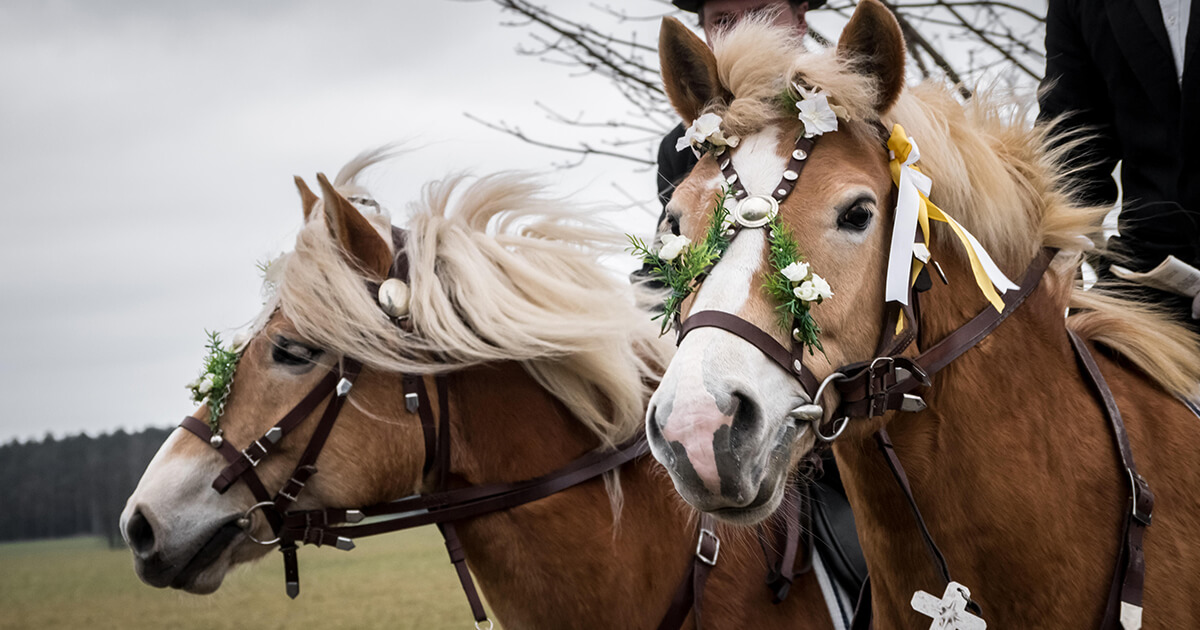
Easter and The Sorbian Eggs
Sophia Werner is of Sorbian origin. In our article she tells us about her special Easter customs and traditions. In sisterMAG No. 47, Sophia talks in detail about the fascinating Easter festivities organized by the Sorbian community in Germany. You can also find a DIY to recreate the typical Sorbian Easter eggs with wax decorations.
- Text: Sophia Werner
Easter and The Sorbian Eggs
For many of my friends from outside of Lusatia (an area in North-East Germany), Easter is a completely normal bank holiday – maybe with a little more chocolate and spring mood than a usual weekend. To me, Easter is the most important holiday right after Christmas. How could this be different for a Sorb who grew up with decorative eggs made from melted wax, adorned horses and singing Easter riders?
If you’re still (very) confused about Sorbian Easter eggs, Easter riders and „Sorbs“ in general, here’s the gist:
Back to the roots: who are the Sorbs?
We Sorbs are a west-Slavic people that have settled in the area of Lusatia which is located in Southern Brandenburg and the Eastern part of Saxony. We are also one of the four officially acknowledged minorities in Germany. The Upper Sorbs live in Saxony and the Lower Sorbs, also called Wends, live in Brandenburg. If you’ve travelled these regions before, the bi-lingual street signs might have even given you the impression that you’ve already crossed the border to the Czech Republic or Poland. We might not have our own state, but the Sorbs already populated this fairly large area between the Baltic Sea and the Erzgebirge in Saxony during the migration of the 6th century. The Sorbs that are left over in Lusatia today are the ancestors of west-Slavic people that have managed to keep their traditions, language and culture alive until today.
It is hard to say how many Sorbs there are…
Estimations mostly count around 60.000 that actively feel they are a part of this minority and 20.000 Sorbs that still speak the language. I am one of those – along with all of my memories of the traditions that make up the celebration of the year: Easter.
The Sorbian Easter
40 days before Easter, on Ash Wednesday, Lent starts for all catholic Sorbs. Even as a little girl, I would abstain from eating sweets. In lieu thereof, Easter was the time of arts and crafts. One of the most famous Sorbian traditions is the dye bath and decorating of the Sorbian Easter eggs. However, while we also used typical technique, paint and brushes like everyone else, the true Sorbian way is to decorate eggs with beeswax and feathers. For that purpose, we use heat in order to melt the beeswax and turn it into liquid wax. Then we get the whole egg and and we’re off to create the perfect Sorbian decoration with the help of warm pure wax and some colour. For our Easter party, the sisterMAG team was inspired to take on this challenge, use the technique and created this DIY art easter eggs!
Easter as a Sorb
For me, the real countdown to the last couple of days before Easter Sunday starts on Maundy Thursday (the last Thursday before Easter). It is our tradition that kids get a so called Maundy Thursday present from their godparents – usually a small, braided pastry called Ostersemmel (Easter bun) or Sorbian decorated eggs along with some pocket money.
The Friday before Easter is usually the day when the first horses arrive – after all, not all Sorbs live in the countryside and have their own horses. So for Easter, horses from all over Germany and even the neighbouring countries in the East are brought to Lusatia. This is also the time when celebrations begin on the streets and in the courtyards. Around 1.500 horses are usually needed for the next couple of days. From this day on, the Easter riders and their little helpers (including me) spend their time priming and polishing their horses: brushing the fur, washing mane and tails so they can be braided, cleaning hooves and cleansing the tack. People who are allergic to horses and hay usually aren’t a fan of Sorbian Easter traditions… but the spectacle is still always worth watching!
As per the old tradition, Easter Sunday starts at 5.45 in the morning! At the stables, everyone is greeted by a friendly „Zohnowane jutry“ (Blessed Easter) as the last flowers and embroidered ribbons are braided into the horses’ manes. In our village, the so called Easter riders assemble at 8am on the church square – all looking suitably festive in their traditional outfits of riding boots, frock and top hat. The priest then hands them the church’s flag, cruxifix and a statue of the Risen One. He blesses them by saying „Njes´ce poselstwo zrowastanjeneho Chrystusa do susodneje wosady!“ – „Ride into the next village and spread the message, Jesus Christ has risen!“
The procession rides…
The Sorbian tradition doesn’t end with all the wax usage, special dyeing, and the easter eggs themselves. The procession continues riding into the next village and the other way round. They sing and pray in Sorbian, Latin and sometimes even German to spread the message of Easter. In the afternoon, when they have arrived at their destination, the Easter riders are invited into the houses of the villagers where they are fed with sandwiches and cake. In the meantime, the younger people like me, took care of the horses to earn some extra cash for the Easter party in the evening. Ever since I was little – and this really hasn’t changed – the goal was to see as many processions as possible and collect the most gossip for school on the next day. The boys were allowed to join the riders from the age of 14 so I always had plenty of friends who rode in the procession. Therefore, my Sunday was mostly spent figuring out the new schedules for this year’s procession so I could plan when I had to be where. At the end of the day, it was my goal to take the most pictures of my Easter-riding friends on their horses.
Oh, and of course we had a little Easter eggs hunt in between – but that was less important than all of the beautiful processions.


